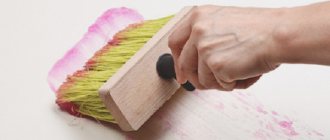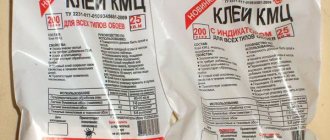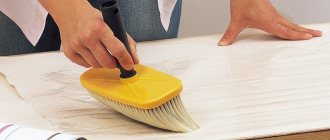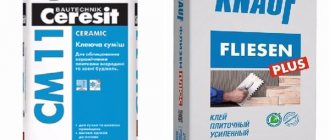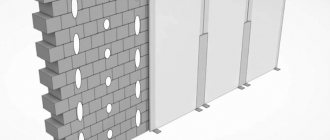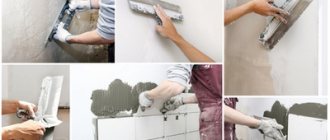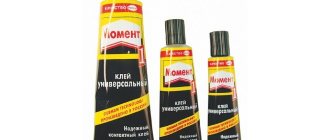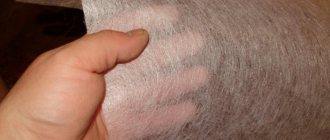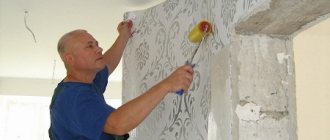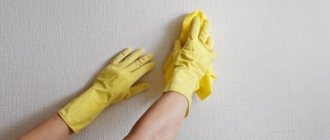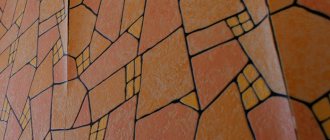Possibilities of PVA glue
PVA glue is a mixture of water, polyvinyl acetate, plasticizer and other additives, which together form a white adhesive mass with a specific odor. What types of PVA glue are there, what are their properties?
Types of glue
The most common are six types of polyvinyl acetate-based adhesives:
- stationery glue PVA,
- dispersion adhesive mass,
- universal,
- building,
- domestic,
- PVA wood glue.
Any of them is suitable for gluing pulp and paper products, wood and other materials. However, each type of glue has specific properties that help achieve the best quality of adhesion when gluing certain materials. Thus, in carpentry, a special PVA glue for wood is needed. There is another type of glue that is used not only for working with paper, but also with leather and even tiles - this is super PVA glue. Household adhesive is suitable for wallpapering, and a universal adhesive is suitable for all types of materials.
Properties of PVA
Polyvinyl acetate-based adhesive has many advantages:
- frost resistance;
- excellent adhesive ability;
- does not emit toxic compounds;
- not flammable;
- invisible when applied in a thin layer;
- When hardening, the shrinkage of PVA is negligible.
The price of PVA glue per 1 kg can vary significantly depending on the composition and purpose. The more stringent the requirements the glue meets, the more it costs. The average cost of construction glue is 50 rubles per 1 kilogram.
Leroy Merlin offers a wide selection of goods at low prices for residents of Moscow, as well as the cities of the Moscow region: Balashikha, Podolsk, Khimki, Korolev, Mytishchi, Lyubertsy, Krasnogorsk, Elektrostal, Kolomna, Odintsovo, Domodedovo, Serpukhov, Shchelkovo, Orekhovo-Zuevo, Ramenskoye , Dolgoprudny, Zhukovsky, Pushkino, Reutov, Sergiev Posad, Voskresensk, Lobnya, Klin, Ivanteevka, Dubna, Yegoryevsk, Chekhov, Dmitrov, Vidnoye, Stupino, Pavlovsky Posad, Naro-Fominsk, Fryazino, Lytkarino, Dzerzhinsky and Solnechnogorsk. You can order the necessary goods online with delivery to all these cities or visit one of our retail stores in Moscow and Moscow Region.
Why is it not recommended to glue wallpaper with PVA glue?
Vinyl adhesive can be used for gluing a whole range of wall materials - paper, vinyl, embossed, fabric, velor, metal, bamboo, structural and paintable wood fiber wallpapers. At the same time, the sliding structure of the glue makes it easy to align and accurately match the pattern on the wallpaper. Before the glue dries completely, it is even possible to tear off the wallpaper and re-glue it without adding new glue.
Interesting: Why homemade marshmallows don’t dry
The method of using vinyl adhesive for gluing wallpaper depends on the type of wallpaper itself.
On light paper wallpapers - both single-layer simplex and two-layer duplex - vinyl glue is applied once, and then they are immediately applied to the walls. When choosing heavier wallpaper, some uneven walls or porosity of the base, a different method of wallpapering is used. First, apply a layer of adhesive to the surface of the base and allow it to soak into the walls. Then, after a while, another layer is applied and only after that the wallpaper is glued to the wall.
Vinyl adhesive is used on all types of mineral substrates: concrete, stone, plaster, brick, porous and non-porous substrates. Some types of glue also adhere well to laminate and ceramic tiles.
It is generally expected that these substrates should be cleaned, degreased and dried before adhesive is applied. However, having additional ingredients in its composition, vinyl adhesive is also effective when gluing vinyl, mineral, fiberglass and textile wallpaper and in places of high humidity. Thus, vinyl glue turns out to be a very necessary material when decorating a bathroom or kitchen with wallpaper.
Vinyl adhesive is used not only for finishing rooms with various types of wallpaper. It is also used for interior decoration with various decorative elements. Vinyl adhesive is effective for attaching polystyrene foam moldings and tiles to vertical and horizontal surfaces. In addition, water-dispersion vinyl adhesive is used for gluing composite parquet, panel parquet, laminate and floating parquet. The flooring can be combined with either a base surface or a cork underlay. This adhesive is also used for gluing laminate and veneer.
Vinyl adhesive is very popular in woodworking and furniture production. Transparent, quick-drying adhesive is effectively used for end-to-end jointing of prefabricated furniture, both conventional and intended for wet areas. A reliable adhesive with an aesthetically pleasing end result and ease of use, it is common and available for home use.
Vinyl adhesive is not exclusive to the construction industry. Vinyl-based adhesives are also successfully used in everyday life for minor repairs. They quickly and efficiently fasten products made from paper, cardboard, wood, plastic, and ceramics. And such properties of vinyl adhesives as transparency, optimal setting speed, environmental friendliness and efficiency in relation to various materials allow them to be used for decorative purposes - to create wooden mosaics or gluing beads and other decoration elements to different types of fabric. Thus, vinyl adhesive is used both in educational institutions and in the design field.
Properties of vinyl adhesive
The popularity and productivity of vinyl glue - both as an adhesive and as an independent substance - are associated with its properties:
• high efficiency in relation to a wide range of different materials, the ability to carry out a variety of finishing works with one glue; • simplicity and accessibility of use. Depending on the consistency, the adhesive is ready for use immediately or you just need to stir it in cold water (almost all varieties are instant); • high sliding ability allows the joining of materials to be joined as accurately as possible; • after drying, the glue becomes transparent, does not leave stains or lumps, does not turn yellow or become brittle; • very resistant to moisture, which significantly expands the scope of its application; • resistant to high and low temperatures, non-flammable; • in dry form the shelf life is practically unlimited; in the form of a ready-made mixture it can retain adhesive properties for about a week; • the bactericidal and antifungal components contained in the composition prevent the primary formation of mold and mildew; • safe for the environment and human health, has a neutral alkaline level - does not irritate the skin.
The disadvantages of vinyl adhesive are most often associated with its unreasonable use. Designed primarily to work alongside heavy wallpaper, using vinyl adhesive with lighter finishing materials may be impractical and uneconomical. Another, but this time objective negative characteristic of vinyl adhesive is its low air permeability (not a “breathable” material). Therefore, vinyl adhesive is more often used in functional, non-residential premises.
However, the advantages of vinyl adhesive far outweigh its disadvantages, which makes it one of the very popular construction and household adhesives.
It is on the basis of polyvinyl chloride that wallpaper is made with a range of special properties that are superior in certain parameters to ordinary paper wallpaper.
Characteristics of PVA glue that prevent it from being used for wallpaper
Polyvinyl acetate glue forms a very durable coating and allows materials to be firmly glued to each other. This is perhaps the only plus in pasting it.
But there are a lot of disadvantages, thanks to which it is better not to use this type for repairs using wallpaper:
- The composition is very thick, resulting in uneven drying of the treated surface. It is very difficult to level the canvases on the surface under such conditions. Even using high-quality PVA will not give the same result as using wallpaper, since the latter is distinguished by the fact that it glides very well, which helps to install the canvas on the wall as intended and necessary. Special particles are added to wallpaper glue, which give it this quality, allowing it to glue canvases with better quality.
- As mentioned earlier, PVA dries over a longer period of time and unevenly. If it is spread with a thin layer, it polymerizes quickly, but in a thick layer a film is formed inside, which does not allow water to evaporate from some parts of the layer, thereby taking a long time to dry some areas.
- The polyvinyl acetate composition is finely dispersed, so gluing wallpaper with it on rough surfaces is not convenient and simply impossible, since it does not fill voids. Wallpaper adhesive consists of many large cellulose fibers, which helps to stick the canvas even to an uneven surface.
- After the adhesive dries, it becomes like plastic and will firmly hold the previously pasted wallpaper. If you need to make repeated repairs, it will be almost impossible to remove such a coating.
Because of these qualities, the use of polyvinyl acetate in wallpapering is not recommended. But situations arise when this product is indispensable for repairs:
- Peeling off joints.
The already finished coating, on which the joints have begun to peel off, can be lubricated with PVA and wait a few minutes, and then pressed together. After this, the joints will already be tightly glued. Advice! For easier application, polyvinyl acetate should be diluted in the following proportion: 2 parts glue to 1 part water. - Pasting overly heavy coatings. Wallpaper glue cannot always cope with very heavy canvases, so for such repairs you can dilute a little PVA in the wallpaper and mix thoroughly. The usual portion is 150 ml per 1 liter of wallpaper paste. This additive will improve grip. There is also a special wallpaper glue for such canvases, but it is usually not cheap, and in order to save money, this method is also suitable.
Is it worth using PVA?
Peculiarities
PVA (polyvinyl acetate glue) is an aqueous dispersion, i.e.
undissolved polymer particles in an aqueous environment. When drying, when the water evaporates, the polymers form a film that is no longer soluble in water. Is it possible to glue wallpaper with PVA glue and still get a high-quality result? Of course you can, as I said above, in the past this is how trellises were most often glued. However, it should be borne in mind that this adhesive composition contains both advantages and disadvantages. Therefore, it should not be considered as an alternative to wallpaper glue.
Polyvinyl acetate dispersion ensures reliable adhesion of trellises to walls
Advantages. The material has the following positive qualities:
- Good adhesion. Provides high-quality adhesion of the canvas to the base;
- Moisture resistant. Even in a damp room, the canvas will not peel off, since the formed film does not dissolve in water;
- Environmentally friendly. There are no harmful substances in the composition, so you can use it even in children's rooms;
- Strengthens the base . Capable of gluing loose substrates;
- Low cost . It is cheaper than wallpaper mixtures;
- Can be used for heavy wallpaper . It holds vinyl sheets and even glass wallpaper perfectly.
If you decide to use PVA to glue the trellises, do not forget to dilute it with water to increase fluidity. Otherwise, it will not be possible to apply the liquid in an even, thin layer. Otherwise, the instructions for gluing wallpaper are the same as when using regular wallpaper glue.
Before use, polymer glue must be diluted with water to obtain a liquid consistency.
Flaws:
- Difficulty in removing old wallpaper . As a result of good adhesion, old trellises are very difficult to remove. Moreover, water in this case, as you remember, does not help;
- Doesn't glide well . Therefore, it is quite difficult to join the patterns of the canvases with each other with your own hands;
- May bleed through paper . If the trellises are paper and thin, liquid may leak through them. As a result, yellowish spots will appear on the surface;
- Dries for a long time and unevenly . Therefore, it is necessary to maintain suitable conditions in the room for the wallpaper to dry for a long time. At the same time, it sets quite quickly, which makes gluing somewhat more difficult.
Polymer adhesive makes it difficult to remove old trellises
Beginners are often interested in how to remove wallpaper glued to PVA? You can soak the top layer of wallpaper and then remove it along with the glue using a scraper or chisel. When the wallpaper is removed, you will have to clean the wall mechanically or using a hair dryer and a spatula.
From this we can conclude that it makes no sense to use a polyvinyl acetate mixture for gluing trellises, because at present there are many inexpensive and high-quality wallpaper adhesives. However, you shouldn’t completely abandon it either - below we’ll look at in what cases it may come in handy.
Polymer film allows you to strengthen the surface of the walls
When can you use PVA?
The adhesive composition in question can be successfully used in the following cases:
- For priming loose surfaces . If, for example, you are going to glue trellises onto old plaster, this material will strengthen the base. The only thing is that it should not be used in its pure form, but diluted with water in a ratio of 1:2 to obtain a liquid, well-penetrating consistency;
- For gluing edges . You can successfully glue the wallpaper with PVA glue if it has peeled off at the edges. Since it has good adhesion to almost any surface, surfaces previously treated with wallpaper glue are also not a problem for it;
- For adding to wallpaper paste . A small amount of this composition will improve the adhesion of wallpaper glue, while maintaining all its other qualities. As a rule, it is added in a ratio of 1:20;
PVA and wallpaper
In general, a modern master, planning to re-glue walls, will buy wallpaper glue. It is unlikely that anyone would think of looking for a PVA bucket for this purpose.
But in order to glue joints, a corner that has become unstuck over time, or an accidentally damaged section of the wall, PVA glue is often used. It is perfect for this type of decoration, holds up well, is inexpensive, and is always on hand (especially when there are children in the house). After all, you must admit, it happens that the repair was not yesterday, the remains of the wallpaper paste have disappeared into oblivion, are we really going to run for a whole package of new ones just for a couple of patches? Most likely, no, we will look for improvised means. PVA will turn out to be just such a lifesaver.
Should I add PVA glue to wallpaper glue?
When gluing wallpaper, is it possible to mix PVA glue and wallpaper glue? Is it possible to additionally apply PVA to the wallpaper on top of the wallpaper glue?
It makes no sense to mix PVA and wallpaper glue. The fact is that they now produce high-quality wallpaper glue that glues wallpaper perfectly. But PVA was used earlier, when glue was no better than paste.
I don’t understand why mix two types of glue?
If you are gluing loose (unstuck) parts of wallpaper, you can safely apply PVA glue to the dried wallpaper glue.
If you are gluing new wallpaper, it is better to choose one glue: wallpaper or PVA. Sometimes PVA wallpaper is specially glued to particularly problematic areas, since it has greater adhesion to uneven surfaces.
I don’t understand why mix two types of glue?
Foundation Type: When Looks Matter
Before applying wallpaper to paint, determine the type of coating:
- Oil – has a stable structure, is moisture resistant, sits well on the surface and forms a protective layer. Has a strong smell.
- Water-emulsion - made on a water basis and tightly impregnates the base after drying. It is odorless and repels moisture well.
If, when removed with a spatula, the material falls off in layers, it is an oil base; if it comes off very poorly and has practically merged with the structure of the wall, it is a water-based material.
Glue Alt (alt) as a means of combating bedbugs
This moisture-resistant pest control product is odorless and non-toxic. It exhibits its adhesive properties within half an hour after application to cardboard, tape or any other area with a smooth surface. The anti-insect product must be applied at least 0.2 centimeters wide.
Once the insects enter the substance, they die and the platform should be discarded. You should not apply glue to an empty surface - the floor, table or baseboard, as after application and drying, it is very difficult to remove. If the product gets on your skin or clothing during application, it can be removed with gasoline or any organic solvent.
The advantages of Alt glue are:
- relative cheapness of the drug;
- does not require much time;
- the effectiveness of bedbug traps when properly organized.
Vinyl glue
Vinyl glue
Vinyl glue is an adhesive widely used for finishing, repair and household purposes. As a rule, it is used for gluing vinyl wallpaper. Given the name of the glue (“vinyl”), many may have the misconception that this product is based on vinyl, or, in other words, based on polyvinyl chloride. However, this is not true.
Let's remember what polyvinyl chloride is. Polyvinyl chloride (or vinyl) has been known to mankind for more than 100 years (polyvinyl chloride was first obtained in 1835 in Germany), but it began to be used on an industrial scale only after 1933, when a patent was received for methods of processing polyvinyl chloride into various products. Since then, vinyl has been used in manufacturing, retail, construction, advertising and other areas. Polyvinyl chloride (often called PVC) is a very common thermoplastic polymer, transparent or white, obtained by processing oil or natural gas and table salt. It has good thermal and electrical insulating properties, is resistant to aggressive chemicals, rotting and decomposition, is harmless to health, does not dissolve in water, and is difficult to dissolve in most organic solvents. All these characteristics make it possible to use PVC for the production of a huge variety of household items for the home, various building materials, and medical equipment.
Classification
PVA adhesives have their own classification. Stationery glue is a universal composition created for everyday use, which has become widespread. It is not frost and water resistant. Other species also deserve attention.
Wallpaper
Often found in everyday life, but less often in office. Designed for gluing wallpaper on concrete and plaster. It is frost-resistant down to -40 °C.
Universal
The adhesive is suitable for all materials. They can easily glue wood, leather, paper (everything except glass, metals). It is added to several types of putties and primers. Frost resistance down to -20 °C.
Glue Features
Let's figure out what its advantages are and is it possible to glue wallpaper with PVA glue?
PVA glue is an emulsion of polyvinyl acetate in water containing a plasticizer and some additives. The composition is a water-based dispersion substance, so the surfaces stick together when the water evaporates.
Advantages:
- The composition quickly and firmly glues surfaces.
- Non-toxic.
- Does not have a pronounced unpleasant odor.
Flaws:
- Wallpaper smeared with PVA will, of course, stick perfectly, but the treated area will become hard and may turn yellow over time.
- If the surfaces that need to be glued are porous and rough, the glue will not adhere well.
- A significant disadvantage of using this glue in this area is that you will then have to literally gnaw the wallpaper off the wall with your teeth.
Important! Most of us do not make renovations that last forever, and at least once a decade we change the design of the walls of the room. Therefore, in order not to complicate your work in the future and not to curse later those who invented PVA and their mental abilities, do not get carried away with this glue in on-line repairs.
Based on the above, PVA glue is not widely used in wallpapering. What will happen if you try anyway?
Should I add PVA glue to wallpaper glue?
When gluing wallpaper, is it possible to mix PVA glue and wallpaper glue? Is it possible to additionally apply PVA to the wallpaper on top of the wallpaper glue?
Interesting: Is it possible to leave boiled mushrooms in water overnight?
It makes no sense to mix PVA and wallpaper glue. The fact is that they now produce high-quality wallpaper glue that glues wallpaper perfectly. But PVA was used earlier, when glue was no better than paste.
I don’t understand why mix two types of glue? If you are gluing loose (unstuck) parts of wallpaper, you can safely apply PVA glue to the dried wallpaper glue. If you are gluing new wallpaper, it is better to choose one glue: wallpaper or PVA. Sometimes PVA wallpaper is specially glued to particularly problematic areas, since it has greater adhesion to uneven surfaces.
When gluing wallpaper, is it possible to mix PVA glue and wallpaper glue? Is it possible to additionally apply PVA to the wallpaper on top of the wallpaper glue?
Advantages and disadvantages
The positive qualities of such a product include:
- PVA refers to dispersion compositions, for the production of which polyvinyl acetate particles mixed with water are used. The coupling process is carried out during the evaporation of water. During this process, the particles of the composition adhere, and a durable film appears.
- Water can be used to dissolve the glue.
- PVA glue is characterized by high bonding ability, if we draw analogies with wallpaper composition.
Each material has certain disadvantages. These disadvantages include:
- The consistency of the glue is very thick, making it impossible to apply it evenly to the wallpaper. As a result of this negative property, it is not recommended to use it for installing large panels of wallpaper. PVA glue contains special components that provide slip and uniform application.
- The thick consistency of wallpaper glue does not allow it to dry evenly. Also, during drying, a film appears, under which a large amount of adhesive is concentrated. In other words, it is called a bag of air. Wallpaper glue dries much less and spreads more evenly.
- The resulting film does not dissolve in water. When the canvases need to be removed due to the end of their service life, it is not so easy to find out this fact, because such a film fits very tightly to the wall.
These disadvantages very often frighten people, and they end up using PVA glue for wallpaper.
What to do if there are bedbugs under the wallpaper
If bedbugs are found under the wallpaper, then the success of fighting them depends on careful treatment of the room. It is recommended to start disinfection by pre-treating the walls and ceiling. The walls are properly prepared before gluing new wallpaper.
First of all, get rid of old wallpaper. They are removed from the wall and disposed of without delay.
A special solution is prepared to disinfect cleaned walls. Take the following components :
- laundry soap 72% - 1 bar;
- baking soda - 1 teaspoon;
- hot water - 1 liter.
The soap is grated on a coarse grater, water and soda are added to it. All components are thoroughly mixed and left for 20-30 minutes to obtain a homogeneous mass. With the prepared solution, carefully wipe the walls, ceiling or other places where an increased localization of blood-sucking parasites was found. Wallpaper bugs do not like this treatment.
Glue classifications
Since PVA glue is actively used in various areas of construction, manufacturers of this composition produce various types of products, so the product can be used for various types of wallpaper.
Wallpaper
This option is considered the most popular. It is actively used when gluing paper sheets to wood and concrete surfaces. In addition, it perfectly binds all types of paper; it is not afraid of temperatures down to – 40.
Composition recommended for wallpaper
Universal
This wallpaper adhesive can be used for gluing wood and fabric surfaces. It has a positive effect when combining diverse materials. This type of composition is considered the most popular when gluing wallpaper on plaster walls. This product can withstand frost, resulting in no defects on the wallpaper.
Features of PVA glue
If the paper sheets were previously glued to wallpaper glue, then there are no problems with their further removal from the surface - just soak the coatings and they will come off easily. The canvases treated with polyvinyl acetate glue come away from the walls with great difficulty. Sometimes it takes a lot of effort and time to completely clean the surface. During scraping, you can easily damage the surface of the wall, which will lead to additional processing before gluing. And, if the surface on which the wallpaper is placed is made of plasterboard, then its damage is inevitable. Afterwards you will have to do puttying and leveling, which also takes time and money.
Regular wallpaper adhesive is cheaper than polyvinyl acetate, so you shouldn’t overpay and then suffer during the repair process.
Is it possible to add PVA to wallpaper glue?
I’m doing renovations in the room myself, so I want everything to be according to the rules and good. The question arose: is it possible to add PVA to wallpaper glue? I read that after this the wallpaper may turn yellow. On the other hand, I don’t want the joints to come off, but I hope PVA will help.
As a rule, PVA is not added to wallpaper glue for the reason that it is not required if wallpaper is glued according to all the rules. PVA will not cause the wallpaper to turn yellow, but it will become harder and more expensive to repair. In order to ensure that the joints do not diverge and modern heavy wallpaper with PVC sticks well, it is necessary to perfectly align the walls “to 0”. A special paper tape is glued under the joints. When choosing wallpaper glue, pay attention to the composition. If it is made on the basis of corn starch, then it can be used to glue all wallpaper. In my practice, I once had to remove old paper wallpaper glued only with corn starch. We suffered all day! On BV we already wrote detailed instructions for gluing wallpaper, so look here
Depending on what type of wallpaper you have, paper ones may turn yellow. However, when I was renovating the hallway this summer and gluing non-woven wallpaper, I added PVA glue to the Moment wallpaper glue - about 150 ml per liter of wallpaper glue. The fact is that the walls of the corridor were previously covered with water-based paint, and after priming, for reliability, I decided to add a proven product - PVA.
Several months have already passed, and the wallpaper remains dead everywhere, including at the joints, and no yellow spots have appeared.
When wallpaper glue was in short supply and was not of the best quality, PVA glue was often added to it so that the wallpaper would not come off the walls.
Since then, a huge number of adhesive compositions have appeared on store shelves for every taste, budget and type of wallpaper.
You just need to buy a suitable glue, coat the joints well and do not stretch the wallpaper when gluing it.
Thick paper (like thin cardboard) wallpaper sticks the worst. No matter how much you smear the joints, the next day all the joints will be sealed.
All other types of wallpaper, even heavy, dense ones, stick well and the joints practically don’t come off, and if they don’t stick somewhere, you just need to glue them again and they won’t come off anymore.
You can stick a strip of thin paper at the junction of the wallpaper (regular cash register tape or those specially produced for this purpose will do).
As for gluing using PVA glue.
If ordinary glue (based on starch) sticks too much, you can remove the vinyl top layer, and then soak the base and carefully remove it with a spatula, but with PVA glue. After this, the wallpaper will have to be scraped off the walls. It's glue like rubber, nothing will take it.
All other types of wallpaper, even heavy, dense ones, stick well and the joints practically don’t come off, and if they don’t stick somewhere, you just need to glue them again and they won’t come off anymore.
Cooking algorithm
Wallpaper glue is produced today in the form of peculiar flakes, which, when mixed with water, swell and form a mixture similar to a gel or jelly.
The glue preparation technology consists of the following sequential steps:
- First of all, you need to measure the required amount of clean water. Sometimes experts recommend using a slightly warm liquid, since the mixture can dissolve better in it.
- Afterwards, the required volume of solution is measured. To do this, it is advisable to use a measuring cup to maintain all proportions.
- Before diluting the glue with water, it is advisable to use a stick to make rotational movements to force the liquid to move in one direction. After this, small portions of the flakes are poured into the container. It is important to constantly rotate the stick to prevent the glue from sticking.
- When the flakes have all dissolved and a gel has begun to form, you can finish stirring the mixture. After this, it is left for 5-15 minutes. This is necessary so that the remaining components can swell and acquire the desired consistency.
Once preparation is complete, you can apply the solution to the wallpaper or wall. Please note that it is not advisable to store the mixture for a long time, as it will lose its properties. Therefore, try to calculate as accurately as possible the required amount of the required volume of adhesive.
How to make washable wallpaper with your own hands - why is it necessary..
Before starting any work, it is important to assess the feasibility and logic of subsequent operations.
For example, it makes sense to make washable wallpaper out of ordinary wallpaper only if:
- the canvases have a normal appearance, they were glued not too long ago;
- the canvases did not have time to become heavily soiled;
- the option of home repairs and re-pasting paper wallpaper with new ones does not suit you;
- you are ready to spend personal time and little money;
- your current wallpaper will not come apart and will not deteriorate from upcoming experiments;
- Washable properties are a must, you can’t do without them.
If your current paper wallpaper has already become dirty, lost its beauty and novelty, and has faded under the sun's rays, then surface treatment with a water-repellent compound will not correct the situation.
That is, you will no longer be able to remove old stains and dirt from the paper. But such a layer can provide the possibility of subsequent washing.
How to make quality wallpaper glue
Most often, people buy wallpaper glue from the same place where wallpaper is sold, and sellers/consultants recommend a specific glue for the selected wallpaper. Depending on what kind of wallpaper you are going to buy, you will be offered a certain type of wallpaper glue. In principle, they are all the same type and their differences are only in the method of dilution and density. The thicker the wallpaper you buy, the more firmly the glue should hold the strip of wallpaper. For paper wallpaper, glue is cheaper, you need less of it and the density of the glue diluted in the bucket will be low.
For thick wallpaper with embossing, vinyl, non-woven or metallic wallpaper, the adhesive must be thick and strong so that the strip does not peel off. It is stupid to save money when buying wallpaper glue, especially if you bought good, expensive wallpaper. After all, if you buy cheap glue or buy little of it, hoping to dilute it thinner with water, then it will be difficult to glue the wallpaper strips, and then the wallpaper may come off. Why do we need such savings? If you are already doing repairs, then do it conscientiously, after all, you are doing repairs for yourself, and redoing it will be even more expensive and troublesome.
How to prepare wallpaper varnish?
Is it possible to prepare the paint coating yourself? When it comes to covering with photo wallpaper, it is simply necessary. Some tips for preparing varnish:
- varnish for photo wallpaper or dark-colored walls can be prepared by mixing shellac and borax;
- In order not to stain light-colored wallpaper, sandarac is initially added to the borax and diluted with alcohol.
All materials are available for sale. In general, there will be no difficulties in the cooking process:
- Boil about 400 ml of water in an enamel container and add 20 ml of borax there, and then add about 50 g of shellac. Moreover, after dissolution, shellac is added in portions.
- Cool the preparation and filter (this is a prerequisite to avoid dense inclusions).
- Add borax only in the required quantity, otherwise the coating will not be of the required quality.
The result is a water-based varnish.
